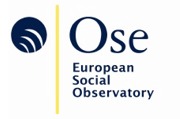Vanhuysse P., Medgyesi M. and Gál R.
Welfare states as lifecycle redistribution machines
OSE Paper Series, Opinion Paper No. 27, April 2022, Brussels: European Social Observatory, 17 p.
Social scientists identify two core functions of modern welfare states as redistribution across (a) socio-economic status groups (Robin Hood); and (b) ‘the lifecycle’ (the piggy bank). But what is the relative importance of these two key functions? Contemporary European welfare states are often maligned as ineffective Robin Hood vehicles riddled with Matthew effects that serve the middle classes at least as much as they serve the poorer or the more needy. However, we find that welfare states are actually better characterized as, first and foremost, inter-age redistribution machines performing an empirically more important task than inter-status redistribution: that is, lifecycle consumption-smoothing. Social policies have evolved to serve multiple goals for multiple historical and political economy reasons in Europe. But here we show that in practice social policies are not primarily responsible for poverty relief and inequality reduction: they are piggy banks, more than Robin Hoods. Nor are they solely responsible. Non-social policies such as economic, fiscal, infrastructural and environmental policies also have significant status-redistributive effects. Hence non-social policies could also be judged by the same yardstick: the extent to which they contribute to reducing inequality and poverty.
